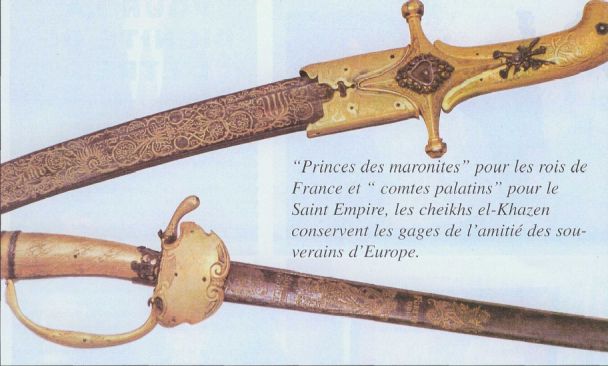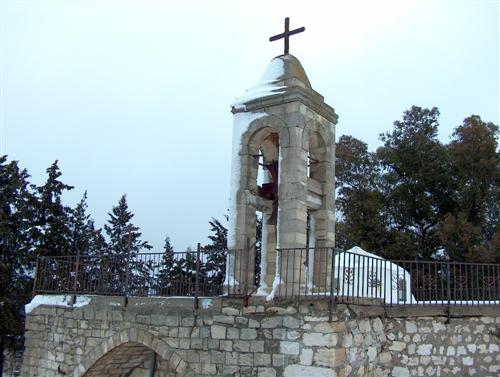Since Lebanon’s 1975-1990 civil war, Beirut’s Maghen-Abraham synagogue sat empty as other buildings in the Wadi Abou-Jamil neighborhood were renovated into multimillion-dollar …
By Tom Perry
BEIRUT (Reuters) - Lebanese Prime Minister-designate Saad al-Hariri has taken a holiday to "think and reflect" after a once close ally quit his anti-Syria coalition in a move expected to delay the formation of a new government.
Druze leader Walid Jumblatt's departure from Hariri's "March 14" alliance this week has redrawn Lebanon's political map and undermined the coalition's June parliamentary election victory over rivals including the powerful Iran-backed Hezbollah group.
Hariri, a Saudi- and U.S.-backed billionaire businessman, had been expected to conclude talks this week on the formation of a coalition government grouping his alliance with parties allied to Syria, including Hezbollah and the Amal movement.
But he left the country Monday night for a holiday, his media office said. The trip aimed to give Hariri a chance to "think and reflect calmly," according to a statement released after a meeting of MPs from his Future Movement.
BY ZEINA KARAM, The gowns are cut low in the front, slashing down to the navel, or low in the back, swooping below the waist, inset with delicate see-through fabric. They couldn't be further from the modest dress generally worn by women in the Muslim Arab world.
Yet these fashions come from Lebanon, a tiny Arab country of 4 million on the Mediterranean. This nation better known for military conflicts than the arts has produced an impressive crop of designers, including Reem Acra and Elie Saab, whose work is showcased at celebrity events such as the Oscars and the Golden Globes.
"Lebanon's name has always been synonymous with war, but when it comes to fashion ... these designers really make us proud," said Laura Seikaly, 39, who was among a recent crowd of bikini-clad sunbathers on a beach north of Beirut. "I guess it comes from the society itself, the way Lebanese women dress. They're very courageous, even more than Europeans."
road trip to the South this weekend brought me and some friends up close to the remnants of one of Lebanon’s prouder former Jewish communities. For some reason the Jews of Lebanon have been a hot journalistic subject around here recently, at least ever since this article in Ha’aretz reported that a group of Lebanese Jews in exile were planning to fund the restoration of Beirut’s once-noble synagogue near downtown. (For more on that story, seen Ben Gilbert’s sharp follow-up in GlobalPost. Ben is also the highly capable editor of the regional business magazine Executive, which recently featured “The Jews of Lebanon” on its cover; this has resulted in the curious sight of a giant photograph of a menorah sitting in doctor’s office waiting rooms and on the desks of bank executives all across town.)
What we found on the way south from Saida was something less prominent, but perhaps more telling: the scattered ruins of Saida’s Jewish cemetery.
Saida, like many Middle Eastern cities, still has a neighborhood known as the Jewish Quarter. (In fact, back in the old city we had briefly puzzled over a martyr poster of a little boy — below that of a deceased resistance leader — that said, in bold script, that it was “paid for by the youth of the Jewish Quarter,” which seemed like an odd juxtaposition. Turns out the boy, tragically, fell into the sea near town and drowned.) According to Kirsten E. Schulze’s book, “The Jews of Lebanon: Between Coexistence and Conflict,” the Jewish presence in Saida dates back at least a thousand years and those who remained in the 1960s and early 1970s had a fine relationship with their Lebanese neighbors. By 1975, though, there was only one Jewish family left in town, that of Josef and Jamila Levy.
Khazen History


Historical Feature:
Churches and Monasteries of the Khazen family

St. Anthony of Padua Church in Ballouneh
Mar Abda Church in Bakaatit Kanaan
Saint Michael Church in Bkaatouta
Saint Therese Church in Qolayaat
Saint Simeon Stylites (مار سمعان العامودي) Church In Ajaltoun
Virgin Mary Church (سيدة المعونات) in Sheilé
Assumption of Mary Church in Ballouneh
1 - The sword of the Maronite Prince
2 - LES KHAZEN CONSULS DE FRANCE
3 - LES MARONITES & LES KHAZEN
4 - LES MAAN & LES KHAZEN
5 - ORIGINE DE LA FAMILLE
Population Movements to Keserwan - The Khazens and The Maans
ما جاء عن الثورة في المقاطعة الكسروانية
ثورة أهالي كسروان على المشايخ الخوازنة وأسبابها
Origins of the "Prince of Maronite" Title
Growing diversity: the Khazin sheiks and the clergy in the first decades of the 18th century
Historical Members:
Barbar Beik El Khazen [English]
Patriach Toubia Kaiss El Khazen(Biography & Life Part1 Part2) (Arabic)
Patriach Youssef Dargham El Khazen (Cont'd)
Cheikh Bishara Jafal El Khazen
Patriarch Youssef Raji El Khazen
The Martyrs Cheikh Philippe & Cheikh Farid El Khazen
Cheikh Nawfal El Khazen (Consul De France)
Cheikh Hossun El Khazen (Consul De France)
Cheikh Abou-Nawfal El Khazen (Consul De France)
Cheikh Francis Abee Nader & his son Yousef
Cheikh Abou-Kanso El Khazen (Consul De France)
Cheikh Abou Nader El Khazen
Cheikh Chafic El Khazen
Cheikh Keserwan El Khazen
Cheikh Serhal El Khazen [English]
Cheikh Rafiq El Khazen [English]
Cheikh Hanna El Khazen
Cheikha Arzi El Khazen
Marie El Khazen